A crisis is exhausting on every level, emotional especially, so following up on Jo Walton’s great post on Books in Which No Bad Things Happen, here are some good manga and anime where no bad things happen, to lighten your spirits without the risk of getting them down…
Yotsuba&c! (manga, usually pronounced “Yotsuba etcetera”): A charming energetic five-year-old girl has been adopted and brought to Japan by her new dad. As she explores the excitements of a new neighborhood, her loving father, his friends, and neighbors including several older girls of different ages (middle school, high school) enjoy her delight in exploring the world and getting to do the kinds of playful things that you do with little kids, like ride a hot air balloon or make cardboard toys. It’s an absolutely charming exploration of how friendships across age groups can be so rewarding to all.
What Did You Eat Yesterday? (manga): Lovely middle-aged gay men and their friends eat delicious food, talk about their delicious food, and love each other very much. Some of the younger ones have a little relationship drama occasionally, so their more mature friends help them with it, and then cook more delicious food. They worry about how best to take care of their aging parents, and handle it well. <3 <3 <3 Brilliantly written and illustrated by Fumi Yoshinaga, author of the Tiptree-winning Ōoku and definitely one of the best mangaka working today.
A Man and His Cat (manga): A cat in a pet shop is sad because it isn’t very cute and no one buys it for a long time, but then a very nice man comes and buys it and gives it a great home! The man is sad because he recently lost his family, but his wife had wanted a cat so he follows her suggestion and gets the cat, and the man and the cat make each other very happy. Touches of melancholy around the edges resolve into simple vignettes of love and cuddles.
Otherworldly Izakaya Nobu (manga): Some lovely Japanese people have discovered a portal to a Medieval-like vaguely-German fantasy planet, so they decide to use the portal to open a Japanese Izakaya (pub restaurant) to let the poor Medieval people taste delicious amazing Japanese food! Loving detail on how different Japanese dishes are cooked, combined with good food helping people bond and overcome minor social friction, like a man being nervous marrying his beloved because her dad is a squid fisherman and he hates squid.
Even better, the presence of this new food establishment in the town eventually starts to actually have second-order consequences! It’s technically an isekai (portal-to-another-world fantasy) but so different from most of them, filled with human kindness and fried burdock root instead of elf girlfriends and ancient demons.
Venice, by Jiro Taniguchi (single volume manga): Renowned manga author Jiro Taniguchi walks around Venice and draws beautiful pictures of Venice. That’s it. It’s just walking through Venice. It’s sort of like his earlier work The Walking Man, which is a man taking a walk through his neighborhood just looking at things, only this time it’s Venice. And Venice is just lovely.
Junji Ito’s Cat Diary: Yon & Mu (single-volume manga): Like “A Man and His Cat,” this is just vignettes of life with cats, but drawn by horror master Jiro Taniguchi who loves to hilariously exaggerate the ways in which cats are creepy: cats move like liquids, leap out at you unexpectedly, stare at you with their glowing eyes from the dark, inexplicably won’t play with you when you want to but insist on playing when you don’t want to—they’re soooooo creeeepy! And you know how when cats yawn their heads turn inside-out and look like aliens? A purely whimsical cat reflection reveling in using the visual techniques of horror to explore why people love such strange creatures as cats!
Oishinbo (manga): Food manga can be a great go-to for nothing-bad-happens, though not all food manga are that way since some of the more competitive ones (like Drops of God or Food Wars) have moments of crushing defeat, villainous opponents, or characters with dire backstories. Oishinbo is an older classic food manga, whose main character is a food critic journalist who fights like cat and dog with his father, who’s a world-famous gourmet. In pretty much every story our hero is visiting some restaurant or other discussing miso soup when his father bursts in declaring “YOU WILL NEVER UNDERSTAND THE TRUE MEANING OF MISO SOUP!!!!” and there ensues a miso soup battle, or rice ball battle, or sushi battle between father and son, but with no stakes, just “will he understand the true nature of miso soup or not?!”
Lots of great detail (often hilariously over-the-top or propagandistic) about Japanese food culture is mixed with low-stakes challenges like trying to figure out why this one ramen shop’s ramen isn’t as good as it used to be. To make the drama even lower and sillier, the US release is only excerpts from the very long original, and they’ve reorganized the individual issues into volumes themed by food (a rice volume, a fish volume), and the stories appear sequentially within each volume, so each volume starts with the hero vaguely flirting with the girl he likes, then dating her, then engaged, then planning the wedding, and in the next volume it starts over with flirting, then dating, so the slightly-suspenseful romance is transformed into simply repeating the happy process of two people who love food getting together.
Shingu: Secret of the Stellar Wars (anime): This is a mecha (giant robot) series, and while it has the usual dramatic attacks where our pilot must defend the world from aliens, imagine Evangelion except Gendo is the best dad ever and comes home to cook curry for his family every time he can take a break from his job defending Earth from aliens, and the whole village is so supportive and wonderful even the space aliens care deeply about rooting for the kids in the school sports festival, and it’s all about the supportive loving community with no real suspense about the fights, and the giant robot is made of origami paper and is so Japanese that when it defeats the monsters cherry petals blow by even if they’re in the vacuum of space!
Even at its most tense, it feels like lying in a hammock in summer sipping lemonade watching kids play. Bonus points for the wide variety of excellent aliens, and the character called Aloha-san is especially awesome.
Hare+Guu, aka Everything was Fine in the Jungle then Along Came Guu, aka Jungle wa Itsumo Hare Nochi Guu (anime): This surrealist wacky comedy is either stressful or stress-free depending on your perspective. Everything was fine in young Hale’s Hawaii-like jungle paradise home until his carefree mother adopts Guu, a pink-haired little girl exactly Hale’s age who is OBVIOUSLY A SINISTER GODLIKE SPACE ALIEN!!!!…but no one believes Hale when he points this out.
Guu uses her mysterious reality-warping powers to create all sorts of bizarre situations with the pure goal of teasing Hale, and everyone else pretty much just chills out and doesn’t mind. While Hale’s life is an endless series of stressful situations, it’s clear that Guu really just wants to play and would never actually hurt him or anyone, and just takes delight in the ridiculous. Thus while it involves watching a little boy run around in a panic a lot, there’s never for a moment the feeling that anything genuinely bad can or would happen when our playful sister can rewind time with a thought.
In the same spirit as Guu, i.e. series where there are episodic threats but the overall mood and structure makes it clear that all will be well so you never actually fear anything genuinely bad will happen, I’ve often found times of stress are perfect for revisiting classics like Ranma ½ (martial arts gender-switching comedy so ridiculous that one time they were trapped on Watermelon Island which is populated only by savage! wild! watermelons! and I realized I was in actual suspense despite it being the third watermelon-related story arc!), the hilarious and rarely-dark competitive bread-baking comedy masterpiece Yakitate! Japan (is your bread delicious enough to let you travel through TIME?!), and-or feel-good classics like Great Teacher Onizuka (GTO) (anime in which warm-hearted ex-punk teacher makes sad kids happier, manga also even better but out of print), the mecha Gundam/Evangelion parody Martian Successor Nadesico (“Get in the giant robot.” “But I just want to be a chef!”), or Satoshi Kon’s heartwarming standalone film Tokyo Godfathers.
On the subject of manga/anime and self-care, this is a good moment to remember that what we usually read isn’t necessarily the best for these interesting times. VIZ just published Junji Ito’s magnificent manga adaptation of Osamu Desai’s 1948 semi-autobiographical novel No Longer Human, a detailed depiction of an artistic life destroyed by depression and mental illness. It’s a magnificent adaptation which I’ve been looking forward to for ages, and I love Junji Ito, but it’s a perfect example of how NOW IS NOT A GOOD TIME TO READ IT! I READ THE FIRST HALF AND IT’S SO GOOD BUT SO NOT THE RIGHT THING TO READ NOW!!
It will remain on the shelf for cheerier days. Now is the time for things a little more cheering! Though if you’re interested in uplifting manga depicting mental illness or neuroatypical characters, consider this a strong recommendation for Komi Can’t Communicate (girl with communications disorder working on making friends with help from supportive classmates) and Genkaku Picasso (boy with depression uses his magical ability to draw mindscape portraits of his friends to help them with their depression and troubles too, with brilliant art plus an extremely uplifting chapter about a trans kid coming out.)
And finally something a little weirder, but useful to reflect on…
It’s a strange thing to put on this (or any) list, but in many ways the happiest anime I’ve ever seen is the street-fighting anime Air Master. It was made by some of the Dragonball Z crew when they were given a late night slot, a big budget, and permission to do whatever they wanted, and what they wanted was lovingly animated fight scenes with absolutely no plot. I first started watching it ironically, because the first four episodes are filled with such intolerably annoying characters that one professional reviewer began his review “I would rather pour burning hot acid into my eyes than watch another episode of Air Master!” and the character Renge was nominated the Most Annoying Character in All of Anime. But if you’re patient with it, it turns suddenly into a bizarrely happy story where a bunch of people who love street fighting get to do what they love.
You know how in a lot of fighting anime the hero wants to fight the bad guy but first they have to chase him all the way across the continent, and fight a whole series of other people to get there, and there’s this huge long drama just to get to the fight? Here people meet each other and say “Hey, you wanna fight?” and the other says “Sure!” and then they do it RIGHT AWAY and they really enjoy it. That’s it. There’s no stakes, no motive…it’s fighting for pure love of fighting. There are some weird and annoying characters (the school friends especially) and some with sad backstories, but they’re all made happier by getting to fight! And they just do it! And do it again! With great fight animation and some deeply weird but strangely engaging characters (notably Sakiyama Kaori and Sakamoto Julietta) it’s somehow one of the happiest shows I’ve ever seen. Everyone actually spends their time doing what they want to do.
You can also feel the creators enjoying the liberty of fast-paced fluffy action after years animating DBZ. There’s even (no exaggeration) an episode where some of the characters are having Korean BBQ and talking about how much they love it, and a man we’ve never met overhears and comes in to talk about how much he loves Korean BBQ and THE ENTIRE EPISODE IS JUST PEOPLE TALKING ABOUT HOW MUCH THEY LOVE KOREAN BBQ! THAT’S IT! NO PLOT! NO FIGHTING! JUST BBQ PHILOSOPHY FOR 20 STRAIGHT MINUTES! It’s a little bit like the brilliant samurai manga Vagabond, another story where people fight for the joy of fighting, a stark contrast to other samurai-era works like Lone Wolf and Cub which is equally brilliant but less joyous, since there are deep matters of honor and revenge structuring all.
Air Master, and lots of stories on this list, are great examples of how sometimes what’s most emotionally exciting about fiction isn’t a high-stakes plot but rich, passionate characters, and how what can often be distressing in fiction is not necessarily success or failure but long stretches of characters not getting to do what they want to do.
Another neat recent example of this is Ran and the Gray World, a stunningly-illustrated fantasy about a girl from a magic family that defends Japan from demonic magic, but while there are threats and crises, the story is much more about supportiveness and love, and spends fewer pages on the giant magic battle than on everyone from the magic village cooking and sharing a banquet afterward to feel better, and meeting with the magic therapist to take care of their magic mental health. It even manages to deal with the issue of little girl crushing on an older man (something many manga treat very problematically) in a carefully examined & emotionally affirming way that keeps coming back to family and friendship.
So as you think about which fiction to plunge into during this exhausting crisis, and as you make your own recommendations to friends, this is a good time to ask yourself how much of the story is characters being stressed or unsatisfied vs. how much of the story people doing things that bring them joy, whether that joy comes from street fighting or sharing ice cream.
Because for the moment, I think it’s time for ice cream…
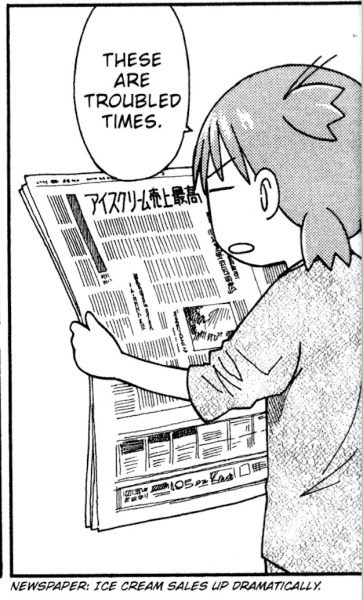
Originally published in March 2020.
Ada Palmer is a novelist and historian. Her first novel “Too Like the Lightning” (book 1 of Terra Ignota) came out in 2016 and was a Hugo finalist; Seven Surrenders and The Will to Battle came out in 2017 and the series finale, Perhaps the Stars is due out in early summer 2021. She studies the history of censorship, radical thought, atheism, science, books and printing, and heresy, well as manga, anime and Japanese pop culture. She teaches at the University of Chicago, writes the blog ExUrbe.com, and composes SF & Mythology-themed music for the a cappella group Sassafrass.










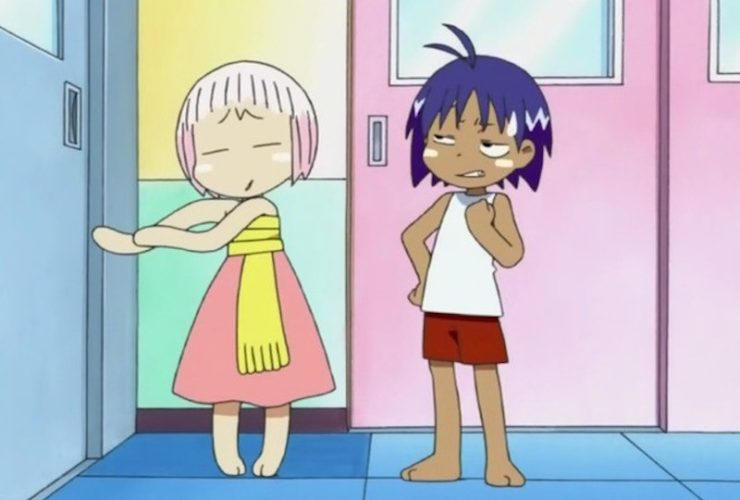
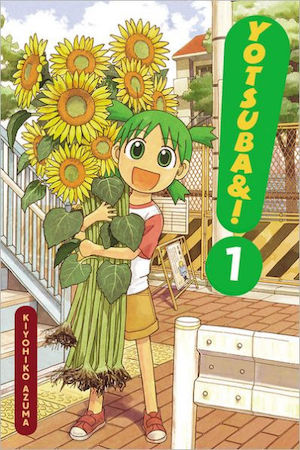
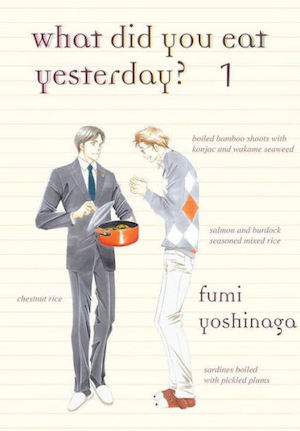
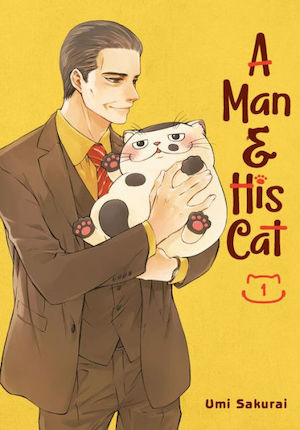
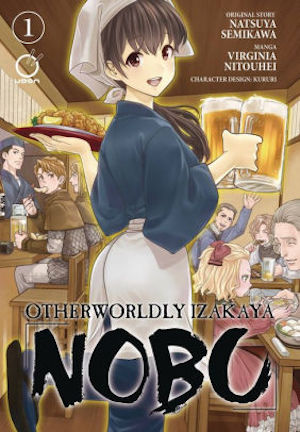
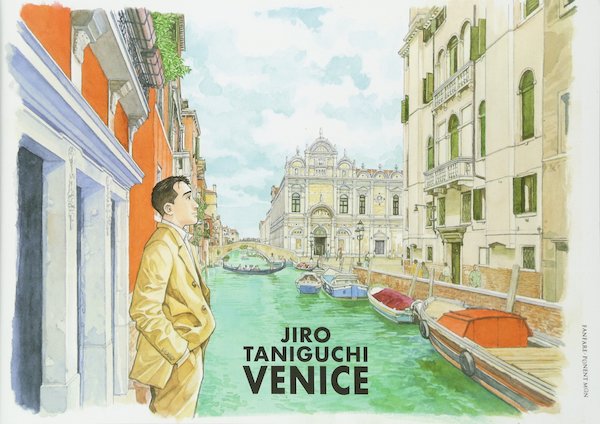
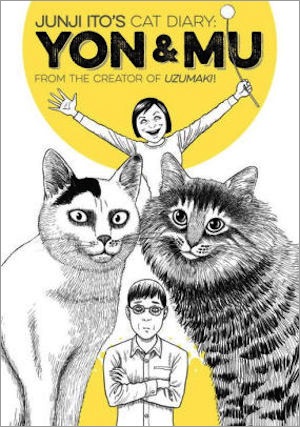
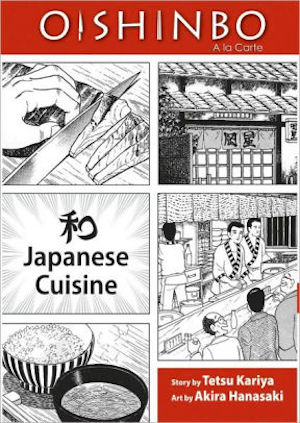
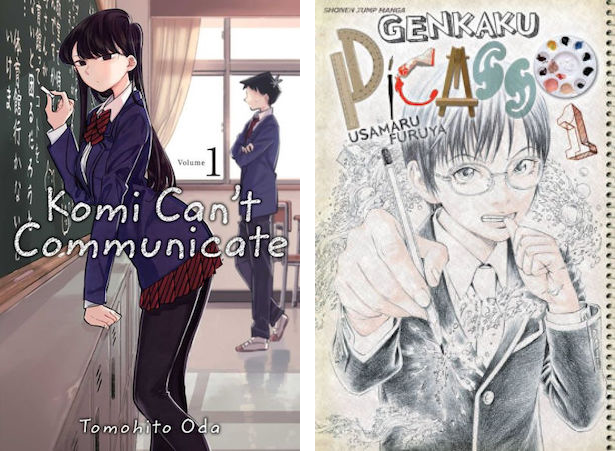
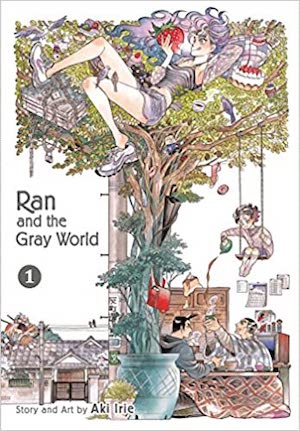
Other than CWs for an alcoholic character and a startlingly rough punishment by an older sister on the younger, Laid-Back Camp is one of the most relaxing, uneventful things I’ve ever watched. There’s a new season of the anime coming soon, and several volumes of manga.
Masayuki Kusumi’s Samurai Gourmet is an amiable manga/TV series about a retired Japanese salaryman unsure what to do with all the time he now has. Answer: eat meal after glorious meal, guided when necessary by his imaginary Warring States era Samurai ronin.
This is a great list with great tips! Saved for later ;)

I should preface these recommendations by spoiling the plots: Absolutely nothing bad really happens to anybody in these movies. They get out of every sticky situation and are fine.
In My Neighbor Totoro (Studio Ghibli), some kids are worried, sad, and scared at times, but everything turns out okay for everybody. Nobody dies or is in danger of death. The story is about a dad and his two daughters (a courageous and forthright tween and a courageous and utterly adorable preschooler) who move into a village where people still plant rice the traditional way in the circa 1950s. They’re there to be closer to Mom, who is recuperating from a serious respiratory ailment in a sort of hospital-run country rest home. They get to explore a wonderful traditional house and the woods and fields nearby, and make friends with the local spirits, who are big and sorta scary-looking but kind and caring. Everybody is treated with respect (except Kanta, a bit) and the scenery is the usual Studio Ghibli visual feast. The English dub is very well done. (Cultural note: At one point the dad is bathing naked with his kids. This is seen as absolutely nonsexual in Japan. You scrub off next to the tub, then you get in and soak, and nobody comments on anybody’s bits.)
In Whispers of the Heart (also Studio Ghibli), two middle-school students are stressed out because they’re facing decisions about their education that will have an effect on the rest of their lives; also, one of them gets embarrassed sometimes, has a stress dream that is too fantastical to mistake for waking life, and quarrels with her big sister. And one of the supporting characters has a sorrowful backstory. But everything turns out okay for everybody. One of the students is living in a cramped apartment with parents who are very busy with work and a dissertation (IIRC) and an adult sister who’s busy moving out and concerned that little sis won’t be able to pick up her share of the chores; she has to study for her high school entrance exams, but there’s this novel that is pushing her to write it… The other student is a gifted violinist and instrument maker who has been offered an apprenticeship in Italy, but he’d be gone for a very long time, and there are reasons for him to want to stay home. All parental figures are supportive and thoughtful. Another excellent English dub, and a surprising use of “Country Roads.”
The Cat Returns (Ghibli again!) features a brief scene in which a cat is almost hit by a truck (but is rescued dramatically and everybody is okay) and lots of G-rated cartoonish violence. It’s like the old Saturday morning Warner Brothers cartoons, but less visually zany–nobody ends up stomping offscreen while looking like an accordion and making accordion noises, but people do fall over in a row like dominoes, while hollering comedically, because they are wearing heavy disguises that set them up for the pratfall. Also, somebody is very sad for a while because she thinks that somebody else is dead (but he isn’t, and if you look at the characters around her they all know that). A wishy-washy high school student learns to stop going with the flow and assert herself after she is almost married off to the (perfectly nice, but uninterested) Prince of All Cats due to her habit of saying, “Well…I guess.” Lots of talking cats, of course, including two characters from Whispers of the Heart and the scary-looking King of All Cats, who is voiced magnificently in the dub by Tim Curry as an aging party animal with a whim of steel. Also: a grumpy stone crow, a star-crossed love story with a happy ending, and a journey into a magical suburb of Tokyo. All of the English voice actors are just awesome. However, if you have trouble with heights, you may want to skip this one.
Two manga where nothing bad happens that helped me go through this year:
1) Wotakoi: Love Is Hard for Otaku (also anime series is on Amazon Prime)
2) THe Way of the House Husband
From what I remember, not a lot bad happens in My Neighbors the Yamadas.
The quintessential slice-of-life anime ‘Lucky Star’ belongs on this list. :-)
Honorable mention for this list is Teasing Master Takagi-san. A middle school boy, Nishikata, feels embarrassed by the good-natured teasing of his girl-classmate Takagi-san. She is never malicious, and always affectionate. But his attempts at being cool and unflappable are thwarted by Takagi-san, who sees through his facade. There are nine volumes available in English, licensed in this country. There is a follow-up series in which these school kids are a married couple with a child ede, not yet officially in this country, but viewable on fan sites. The Teasing Master series is also available as an anime with two seasons so far. One season is on Crunchyroll (Funimation has an English dub) and the other is on Netflix in multiple languages. No violence, devastation, demons or monsters. Good, clean, family fun.
Aria. I’ve never read the manga, but the anime is simply beautiful. It’s about the training of a gondolier on a terraformed Mars. Probably my favorite anime.
The wonderfully melancholy:
Yokohama Kaidashi Kikō
https://en.wikipedia.org/wiki/Yokohama_Kaidashi_Kik%C5%8D
A story about an android running a coffee shop in a world in which humanity is gradually and peacefully dying out…
The author has also done some other nice slice of life manga such as Kotonaba Drive, etc.
Satoko and Nada, by Yupechika. This is about a Muslim girl and a Japanese girl rooming together at an American university and is mostly about their adventures in learning about each other’s culture. There’s one more volume to go (four in total) but I’ll be surprised if anything bad happens. It’s a 4-koma.
“Azumanga Daioh.” Most episodes are loosely connected vignettes of everyday life and hijinks among a group of high school girls, in which the biggest conflicts involve things like girl-crushes, winning the school field day, and how to pet a cat without getting a bitten hand.
This year we greatly enjoyed two “slice of life” anime series. My partner usually doesn’t care for subtitles, but these two were only available that way, and he still loved them. (The latter is probably being dubbed too, that is, we’ve also seen the first episode that way.)
The first was Bokuben – We Never Learn. Our protagonist studies hard and is headed for university, but needs the school’s scholarship. The principal says sure, but in exchange, they want him to tutor two female students, one who’s a math genius determined to study the humanities, and one who’s a humanities genius determined to study the hard sciences. Pretty much everyone is kind to each other, and it’s essentially a chaste “harem show.” There are two seasons, I think, but the manga is much, much longer, and we’re going to start reading it soon.
The second was By the Grace of the Gods. In a very pretty fantasy world, a child is leading a magic-enhanced lifestyle on his own in the forest, taming “slimes” to do his bidding. Some are cleaning slimes, some are healing slimes, and so forth. They’re all cute, bouncy, sentient creatures. Then a group of earnest young nobles and their retainers comes along – one of them has been injured, and when our young protagonist comes out of his cave to heal him, they’re grateful and invite him to come live in the city. He’s amusingly overpowered, skill-wise, and has a surprisng backstory. This series is still being produced – the final (12th) episode will be out Sunday. We’re hoping for more seasons.
Polar Bear Cafe. A bunch of animals and people visit a cafe and talk about their lives etc… Very cheerful, with some wacky characters. Never really explains why some animals can talk or hold jobs. Chi’s new home is about a young kitten who goes out into the world and experiences everything for the first time. Each story is super short, and Chi is adorable.
Gonna throw out BOFURI: I Don’t Want to Get Hurt, so I’ll Max Out My Defense. That show just made me so happy. :)
^Seconded^
Will throw in K-ON (I don’t know if I need to explain this one too much given it’s popularity, but it’s slice of life, girls form a band as an after-school club activity, and nothing but a lot of hyjinks happens)
Hakumei to Mikochi and Flying Witch are must reads if this is what you’re looking for.
Haikyuu, volleyball anime and manga. Wonderfully told even the opposing teams who should be the antagonists become protagonists. And the first couple of seasons are on Netflix.
I highly recommend the Kase-san and series. Its an adorable slice of life yuri that is absolutely adorable and heart warming; nothing bad happens, it’s just too cute!
I don’t know if I can say that nothing bad happens in Emma: A Victorian Romance, but at the very least I can say that almost nothing bad happens.
19: Is it possible Kase-san is a bit boyish? It’s only been mentioned once per issue so I am a bit unclear on that point.
How odd that teens would be so inarticulate about expressing their feelings towards each other…
I joke! I once watch two teens attempt to flirt with each other on the bus, with the active help of a third friend who was clearly _very invested_ in her friends getting together, and it was a total trainwreck of awkward, halting conversation. Although at least it didn’t involve an earbud coyly twirled into an eye, which I have also seen.